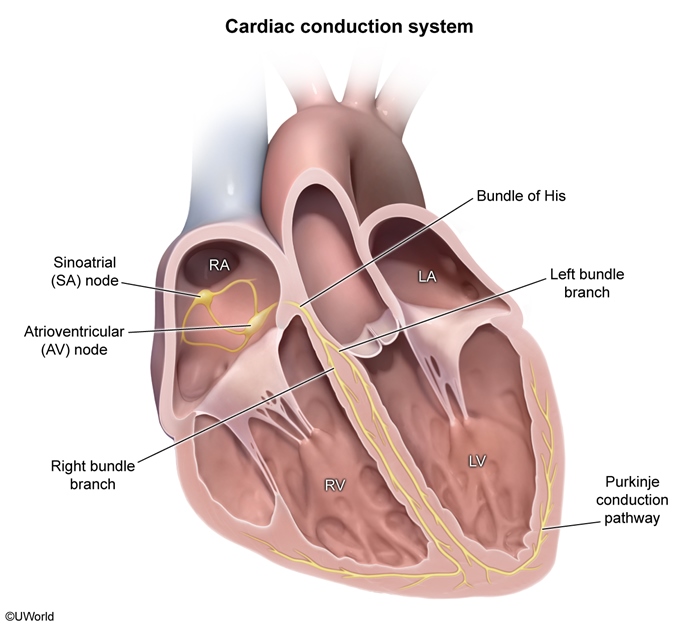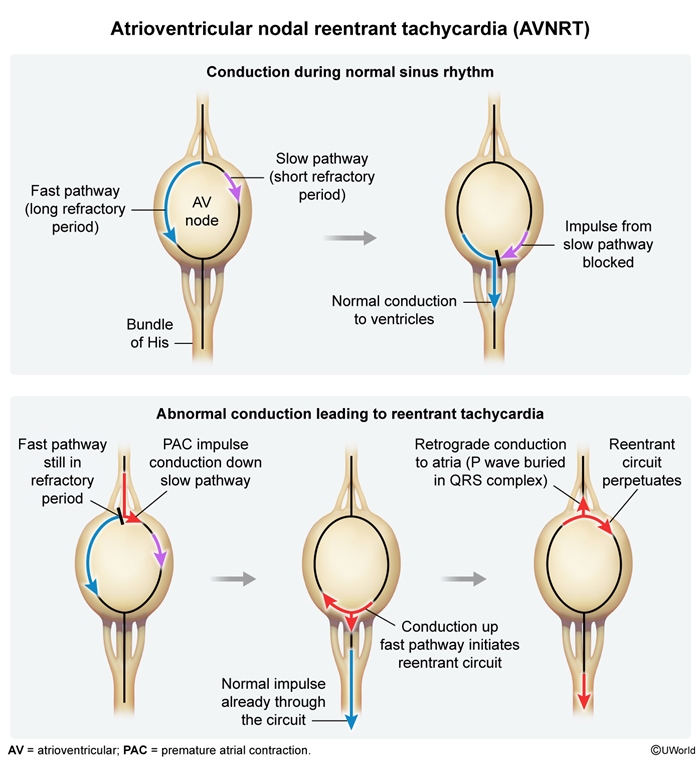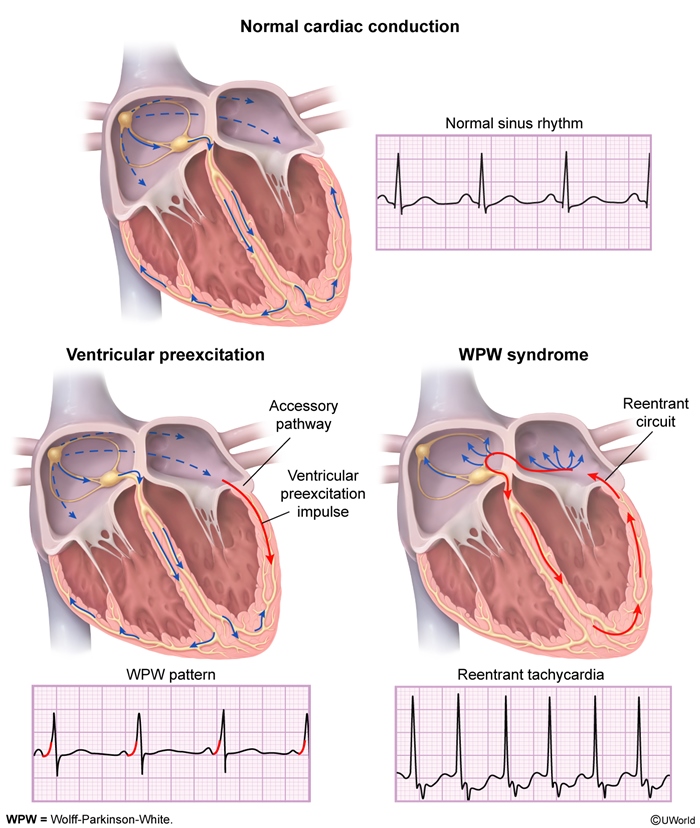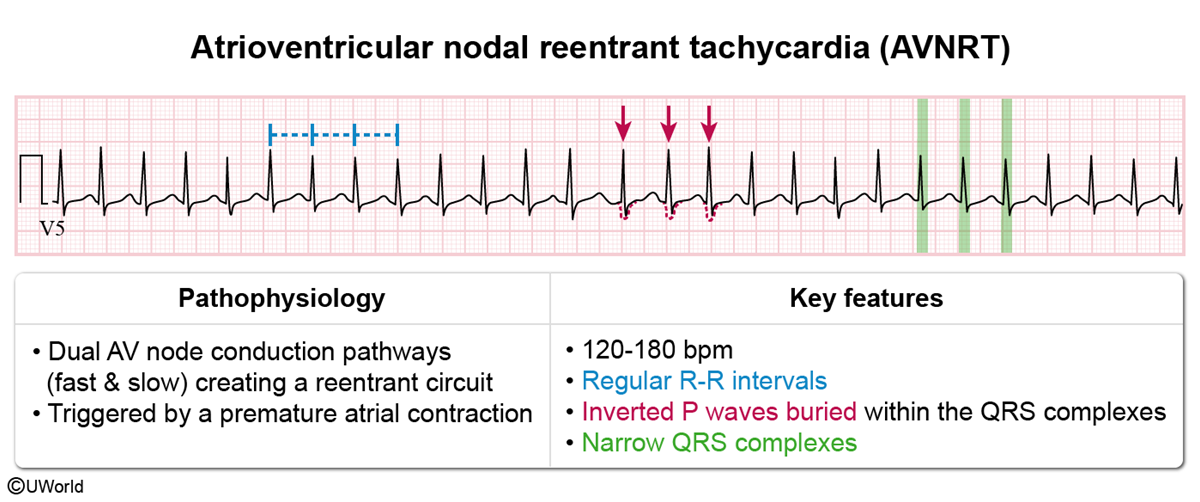Paroxysmal Supraventricular Tachycardia
Article Sections
Introduction
Supraventricular tachycardia (SVT) refers to tachycardias that originate proximal to the bundle branches and Purkinje fibers in the cardiac conduction system (Figure 1); these tachycardias typically involve either abnormal impulse generation (eg, ectopic activity) or propagation (eg, abnormal conduction pathway). Paroxysmal supraventricular tachycardia (PSVT) describes a subset of SVTs characterized by a regular rhythm, rapid rate, and abrupt onset and offset. The 2 most common types of PSVT are:
- Atrioventricular nodal reentrant tachycardia (AVNRT) (most common)
- Atrioventricular reentrant tachycardia (AVRT) (second most common)
These both classically involve abnormal impulse propagation (abnormal electric circuits). Although atrial fibrillation and atrial flutter are SVTs that often occur paroxysmally, they have distinct clinical manifestations and are not included in the PSVT classification.
Pathophysiology and types of PSVT
Continue Learning with UWorld
Get the full Paroxysmal Supraventricular Tachycardia article plus rich visuals, real-world cases, and in-depth insights from medical experts, all available through the UWorld Medical Library.
Figures



